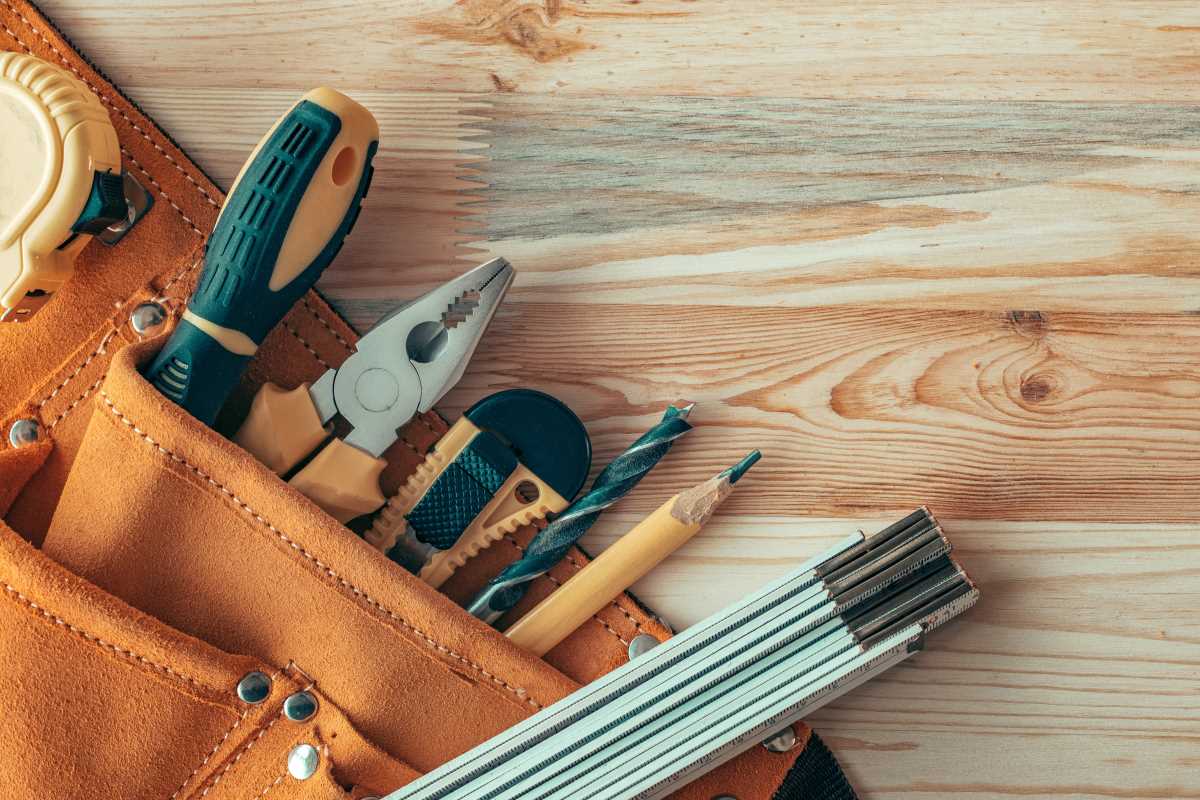Diving into DIY projects provides an excellent opportunity to unleash your creativity while keeping your budget intact. Whether you're a veteran DIY aficionado or a beginner eager to explore, possessing the appropriate tools and materials can significantly enhance your crafting experience. This guide serves as your companion, offering affordable solutions that enable you to produce impressive projects without straining your finances. Through this journey, you'll discover how to transform simple ideas into remarkable creations, all while maintaining a keen eye on cost-effectiveness. Embrace the joy of DIY, and let your imagination lead the way to stunning, wallet-friendly masterpieces.
Benefits of DIY Projects
Engaging in DIY projects provides numerous personal benefits. You experience a sense of accomplishment as you turn raw materials into something useful or beautiful. This creative process enhances problem-solving skills and boosts self-confidence, knowing that you can bring your ideas to life with your own hands.
Financially, DIY projects save you a significant amount of money. Instead of buying expensive pre-made items, creating your own lets you customize according to your preferences while keeping costs low. DIY projects also represent a sustainable choice, as repurposing materials reduces waste and supports eco-friendly practices.
Essential Budget-Friendly Tools
- Hand Tools: A basic set of hand tools, including a hammer, screwdrivers, pliers, and a measuring tape, proves indispensable for most DIY projects. These tools remain versatile and relatively inexpensive.
- Power Drill: A good quality power drill simplifies drilling holes and driving screws. Look for budget-friendly models that provide multiple speed settings and a comfortable grip.
- Utility Knife: A sharp utility knife remains essential for cutting materials like fabric, cardboard, and plastic. Invest in a durable blade that you can easily replace when needed.
- Sandpaper: Smooth surfaces contribute to a professional-looking finish. A variety of sandpaper grits lets you tackle different materials and achieve the desired smoothness.
- Paint Brushes and Rollers: Quality paintbrushes and rollers prove crucial for applying paint evenly. Opt for sets that include various sizes to accommodate different projects.
Affordable Materials for Creative Projects
- Recycled Materials: Items like old wood pallets, glass jars, and unused fabric scraps serve excellently for creating unique pieces. They remain inexpensive and add a rustic charm to your projects.
- Basic Craft Supplies: Essential craft supplies such as glue, tape, and scissors remain affordable and widely available. These serve as the building blocks for countless DIY projects.
- Affordable Fabrics: Stores often have sales on fabrics, allowing you to stock up on colorful materials for sewing or upholstery projects. Look for remnants or discounted patterns to maximize your budget.
- Low-Cost Paint: Paint acts as a versatile material that can transform any project. Choose budget-friendly brands that offer a wide range of colors and finishes to suit your needs.
- Basic Hardware: Nails, screws, bolts, and other hardware remain essential for constructing and assembling projects. Buying in bulk helps reduce costs and ensures you always have what you need on hand.
Creative Ideas to Spark Your Imagination
Seeking inspiration to kickstart your next project? Consider repurposing old furniture by painting or reupholstering it to give it a fresh look. Another idea involves creating personalized home decor items, such as picture frames or wall art, using inexpensive materials like reclaimed wood or canvas. For those who enjoy crafting, making your own candles or soaps can be both fun and functional. Starting a new project can seem daunting, but breaking it down into manageable steps simplifies the process. Begin by researching tutorials and gathering the necessary materials. Plan your project by sketching out designs and creating a timeline to stay organized. Remember, the key to a successful DIY project involves keeping an open mind to experimentation and not being afraid to make mistakes. Each project serves as an opportunity to learn and improve your skills.
Shopping Tips for DIY Enthusiasts
When shopping for DIY supplies, planning ahead proves essential. Make a detailed list of the tools and materials you need before heading out to the store. This approach helps you avoid unnecessary purchases and ensures you have everything required to complete your project. Prioritize quality over quantity; investing in durable tools may cost a bit more upfront but saves you money in the long run by lasting longer and performing better.
Take advantage of sales, discounts, and clearance sections both online and in local stores. Many retailers offer seasonal sales where you can find high-quality materials at a fraction of the cost. Joining DIY or crafting groups online also provides access to exclusive deals and discounts. Another smart tip involves visiting thrift stores and garage sales, where you can find unique materials and tools for very little money.
Keep an eye out for multi-purpose tools that can handle various tasks, reducing the need to buy multiple specialized tools. This approach saves money while conserving storage space. Consider borrowing tools from friends or family members for one-time projects, which can further cut down on costs while still allowing you to complete your DIY endeavors effectively.
Buying in bulk when possible proves effective, especially for materials you use frequently, such as nails, screws, or fabric. Bulk purchases typically come with significant discounts, making it a cost-effective option for ongoing projects. Maintaining your tools by cleaning and properly storing them ensures they last longer, reducing the need for frequent replacements.
Take Your DIY Projects to the Next Level
Enhancing your DIY projects doesn’t have to be expensive. Simple additions like decorative hardware, unique paint finishes, or custom decals elevate the overall look without significantly increasing costs. Experimenting with different techniques, such as distressing wood or using stencils, can also add a professional touch to your creations.
Collaborating with friends or family members on projects makes the process more enjoyable and economical. Sharing tools and materials reduces individual costs and provides a fun, social aspect to your DIY activities. Learning new skills through online tutorials or workshops opens up new possibilities for your projects, allowing you to tackle more complex and rewarding creations.
The beauty of DIY lies in the personal touch you bring to each project. Don't hesitate to infuse your personality and style into your creations, making each piece uniquely yours. By using budget-friendly tools and materials, you can explore endless creative possibilities without worrying about the cost.
Begin today and transform ordinary items into extraordinary art. With the right approach, DIY projects are affordable, fulfilling, and enjoyable.







